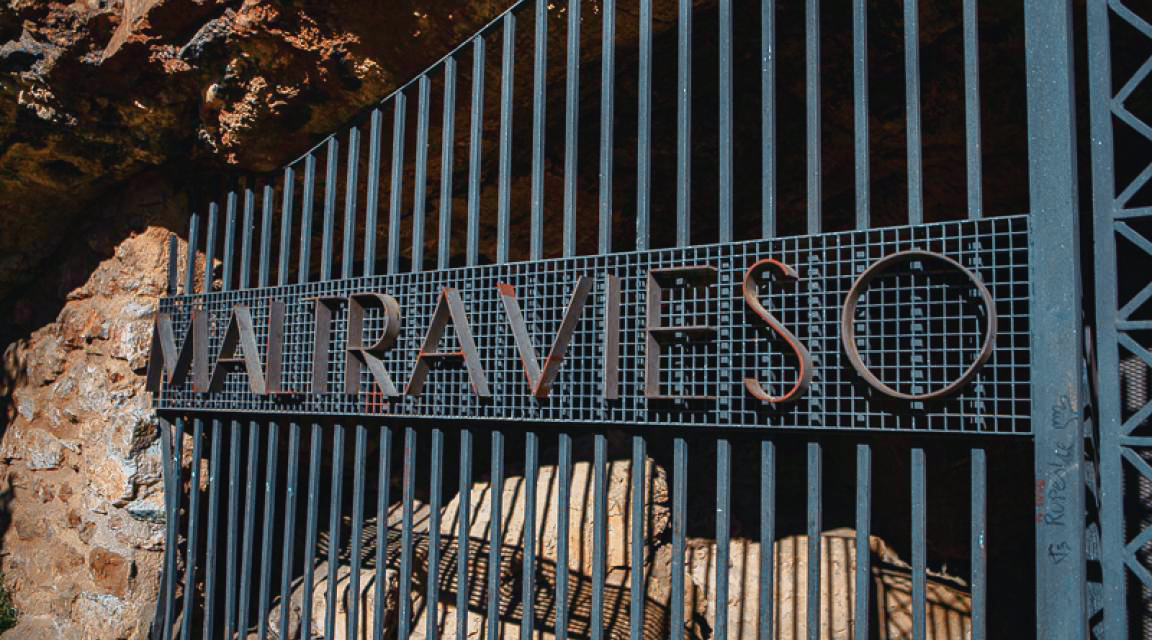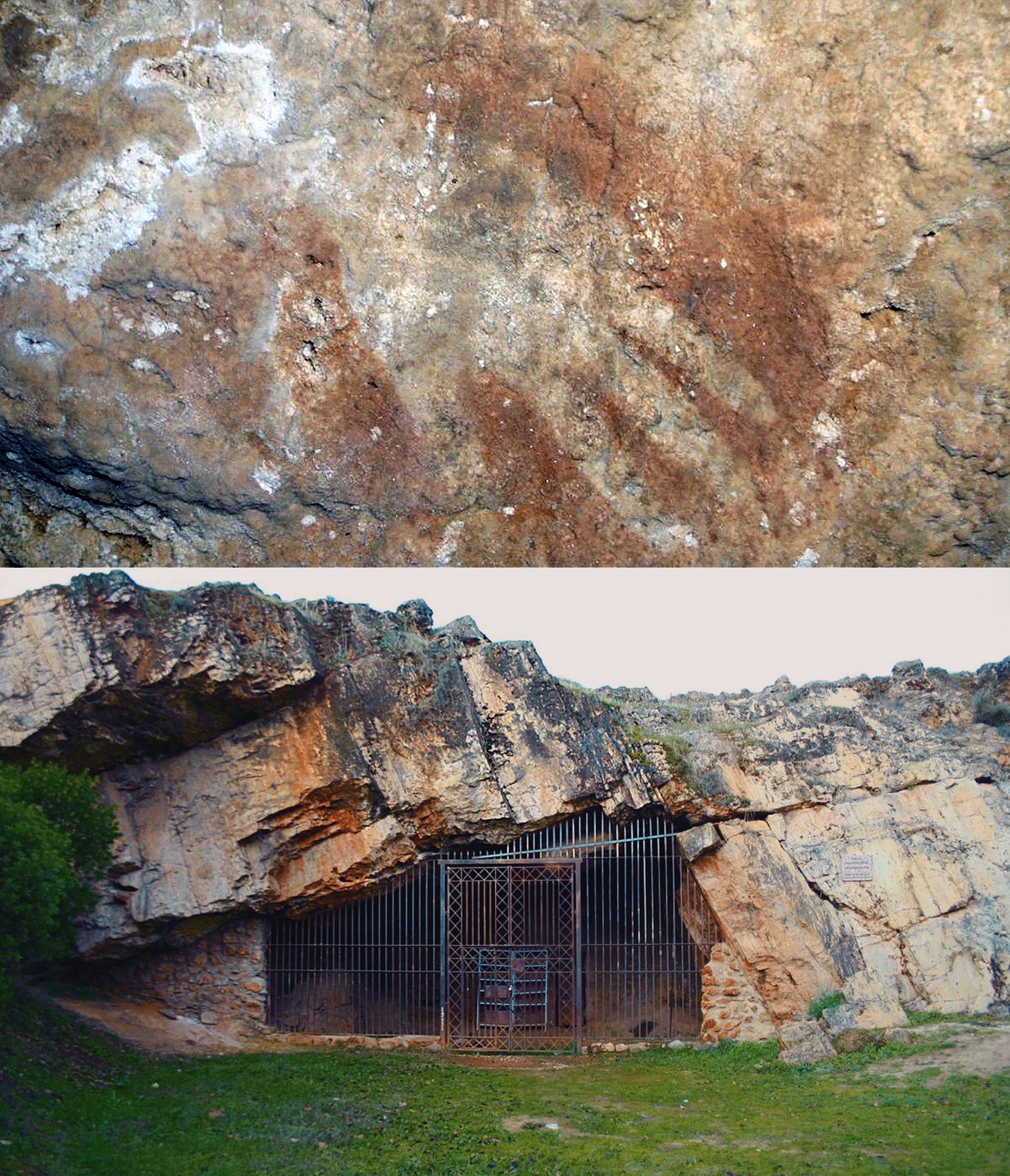


The Cave of Maltravieso in Cáceres, Extremadura, Spain, was discovered in 1951. It shows traces of human occupation from the Middle Paleolithic. It contains cave art, most notably a total of 71 hand stencils, enumerated in the 1990s using ultraviolet photography, but also linear designs and some animal paintings. In a 2018 study based on uranium-thorium dating, a hand stencil from the Cave of Maltravieso was dated to 64,000 years ago. This would make it Middle Paleolithic art, predating the presence of European early modern humans, with important implications for Neanderthal behavior. A visitor center, the Centro de interpretación de la Cueva de Maltravieso, opened in 1999. Other nearby Paleolithic caves are those of El Conejar, Santa Ana and Castañar de Ibor.
Archaeologist Hipolito Collado and his team have been working in the Maltravieso Cave in the city of Caceres, western Spain, investigating the 57 hand stencils.
The research raises obvious questions of purpose of this ancestral process: merely to make their mark, or part of a ritual to commune with spirits? And why are some fingers missing? Moreover, it raises the role of women during the Palaeolithic era.
To begin to address such issues, Collado, head of archaeology for the government of the Extremadura region where Caceres is located, has set out to catalogue all of Europe's prehistoric painted hands, taking scans and high-resolution photos. These are then posted in detailed, 3D format in a free-to-use online database, as part of an EU-funded project called Handpas.
The idea is for researchers anywhere in the world to be able to examine them all in one place without having to visit every cave or gain access to those closed for conservation, in the hope of a greater understanding. According to Collado, a Spaniard who is also head of the International Federation of Rock Art Organizations, painted hands have been found in 36 caves in Europe - all in France, Spain and Italy. Some also contain animal drawings and fossils but his project focuses only on hands.
Researchers have tried to determine whether the hand prints were male or female. Can scientists determine for certain that all hands in one area were done by women? Collado's colleague Jose Ramon Bello Rodrigo suggests it could point to a matriarchal society.
And why in some cases fingers are missing? Regarding the latter, it is commonly believed they folded some fingers over when painting in some sort of sign language.
Did our Palaeolithic ancestors create the hand prints as a signature? No, suggests Paul Pettitt, professor of Paleolithic Archaeology at Britain's Durham University. His research focuses on where people placed their hands and he found that in some cases, fingers appeared to be deliberately placed over a bump in the wall like they were gripping it. He believes there was a definite purpose.
French prehistorian Jean Clottes believes it may have been a form of shamanism, stating that it is likely that putting paint - what we could call sacred paint - on the rock face introduces a link between the person who does it and the rock face, and therefore with the forces in the rock face.
Collado also interprets some of the hands he has seen as warnings, stating that in the La Garma Cave there is a panel with hands that is next to a big well that would be deadly. These were definitely done to say 'stop'.
Work on documenting painted hands in two Italian caves has also begun.
→ Subscribe free to the Bradshaw Foundation YouTube Channel
→ Hand Paintings in Rock Art
→ Hand Paintings in World Rock Art
→ Cueva de las Manos | Cave of the Hands
→ The Role of Hand Prints in the Rock Art of the South-Western Cape
→ Handprints in the Rock Art & Tribal Art of Central India
→ Hand Stencils in Chhattisgarh India
→ Hand prints found in Altamira
→ Handpas Project
→ Prehistoric Hand Paintings in the Cave of Maltravieso
→ Hand stencils and their missing fingers
→ Bradshaw Foundation
→ Rock Art Network















